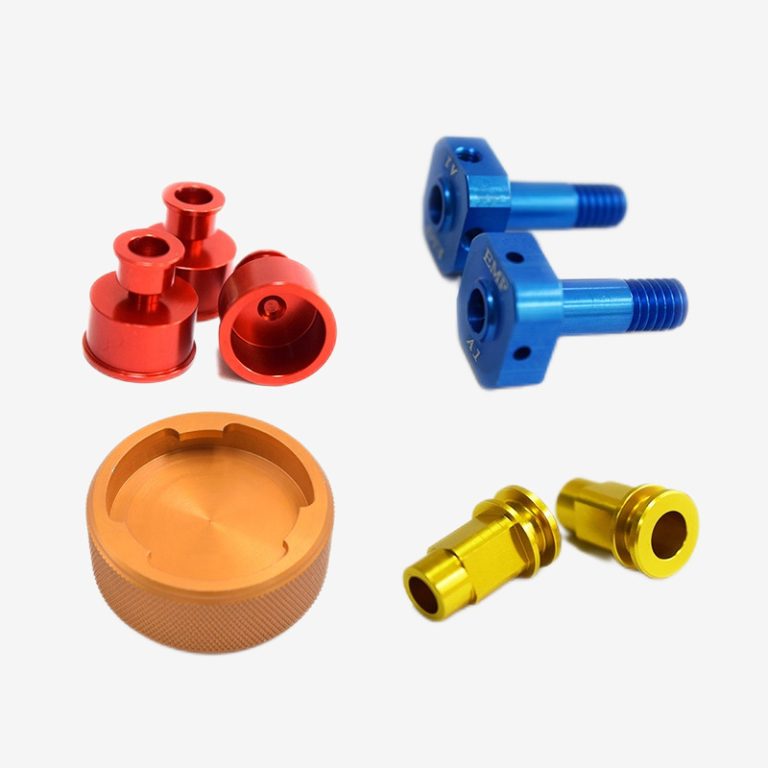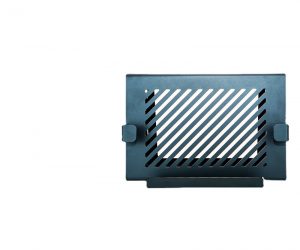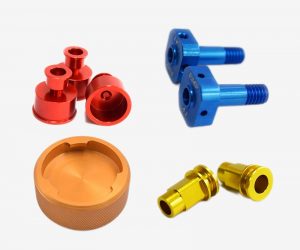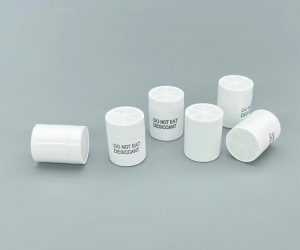1. Introduction
1.1 The Emergence of 3D Printing as a Game - Changer
In recent years, 3D printing, also known as additive manufacturing, has emerged as a revolutionary technology with the potential to transform the construction industry. The concept of 3D printing is based on the principle of adding material layer by layer to create a three - dimensional object, as opposed to traditional subtractive manufacturing methods that remove material from a larger block.
Today, large - scale 3D printers are capable of printing entire building components or even small structures. These printers use a variety of materials, with concrete being one of the most commonly used for construction - scale 3D printing. Special formulations of concrete have been developed to ensure that they can be extruded through the printer nozzle smoothly and set properly to form strong and durable structures.
The emergence of 3D printing in construction has been met with great enthusiasm from various stakeholders. Architects see it as a tool that can bring their most creative and complex designs to life. With 3D printing, there are fewer limitations on the shape and form of a building. Complex geometries that would be extremely difficult or expensive to achieve with traditional construction methods can be printed relatively easily. For Yigu Technology example, organic - shaped buildings with curved walls and intricate patterns can now be realized.
Construction companies are also interested in 3D printing because of its potential to improve efficiency. Since 3D printing can automate much of the construction process, it has the potential to reduce the construction time significantly. A study by a leading construction research firm found that 3D - printed buildings can be constructed in up to 50% - 70% less time compared to traditional construction methods for similar structures. This time savings can be crucial for meeting project deadlines and reducing the overall cost of a project.
In the following sections, Yigu Technology will explore in more detail how 3D printing is revolutionizing different aspects of the construction industry, from design and prototyping to the actual construction process and post - construction applications.
2. Understanding 3D Printing Technology in Construction
2.1 Basic Principles of 3D Printing
At its core, 3D printing is a revolutionary manufacturing process that transforms digital 3D models into physical objects through a layer - by - layer additive approach. This stands in stark contrast to traditional subtractive manufacturing methods, which carve or machine an object from a larger block of material, removing excess in the process.
The journey of 3D printing begins with the creation of a digital model. This model can be designed using specialized computer - aided design (CAD) software, where designers have the freedom to create complex geometries with precision. For Yigu Technology example, an architect might use CAD to design a unique building facade with intricate patterns. Another way to obtain a digital model is through 3D scanning. A 3D scanner can capture the physical dimensions and details of an existing object, converting it into a digital format that can be used for 3D printing.
Once the digital model is ready, it needs to be sliced into thin cross - sectional layers. This slicing process is carried out by slicing software, which divides the 3D model into hundreds or even thousands of horizontal layers. Each layer represents a thin slice of the final object, and the thickness of these layers can range from as little as 0.05 mm to a few millimeters, depending on the desired level of detail and the capabilities of the 3D printer.
After slicing, the 3D printer comes into action. It reads the sliced data and starts depositing or solidifying materials layer by layer according to the instructions in the digital model. As each layer is added, it bonds with the previous layer, gradually building up the three - dimensional structure. The entire process is automated and controlled by the printer's software, ensuring high precision and consistency.
2.2 Key Technologies Employed in Construction 3D Printing
A comparison of these key technologies in terms of some important parameters is shown in the following Yigu Technology table:
| 3D Printing Technology | Precision | Build Speed | Material Cost | Equipment Cost | Suitable for |
| FDM | Low - Medium (0.1 - 0.4 mm) | Slow | Low | Low - Medium | Small components, prototypes |
| SLA | High (up to 0.05 mm) | Medium | High | High | High - detail models, small precision components |
| Binder Jetting | Medium (0.2 - 0.6 mm) | Fast | Medium - High | Medium - High | Large - scale components, sand - based structures |
| Contour Crafting | Medium (0.3 - 0.8 mm) | Fast | Medium | High | On - site construction, large - scale building components |
2.3 Materials Used in Construction 3D Printing
- Concrete: Concrete is one of the most widely used materials in construction 3D printing due to its high compressive strength, durability, and relatively low cost. Special formulations of concrete have been developed to make it suitable for 3D printing. These printable concretes typically have a carefully balanced rheology, which means they can be easily extruded through the printer nozzle but also quickly set and gain strength once deposited. For example, they may contain special additives to control the setting time, improve workability, and enhance the bond between layers. 3D - printed concrete can be used to create a variety of structures, from small building components like columns and beams to entire buildings. In fact, many 3D - printed houses around the world have been constructed using concrete as the primary material. One of the main advantages of using concrete in 3D printing is its compatibility with traditional construction practices, as it is already a staple material in the construction industry. However, challenges exist, such as ensuring uniform distribution of reinforcement (if required) within the printed structure and dealing with the potential shrinkage and cracking during the curing process.
- Metals: Metal 3D printing in construction is still in the early stages of development but shows great potential, especially for applications where high strength, corrosion resistance, and unique geometries are required. Metals like stainless steel, aluminum, and titanium can be used in 3D printing processes such as selective laser melting (SLM) or electron beam melting (EBM). In SLM, a high - power laser is used to melt and fuse metal powder layer by layer, creating a solid metal object. Metal 3D printing can be used to create complex structural components, such as custom - designed metal connectors for large - scale buildings or bridges. These components can have optimized geometries that are difficult to achieve with traditional manufacturing methods, leading to improved structural performance. However, metal 3D printing is currently more expensive compared to concrete 3D printing due to the high cost of the metals themselves, the sophisticated equipment required, and the energy - intensive nature of the printing process.
- Plastics: Plastics, as mentioned earlier with FDM technology, have applications in construction 3D printing, particularly for smaller components and non - load - bearing elements. Materials like ABS and PLA are popular due to their ease of processing and relatively low cost. ABS is known for its strength and durability, making it suitable for components that need to withstand mechanical stress, such as plastic brackets or fittings. PLA, on the other hand, is a more environmentally friendly option as it is biodegradable and can be made from renewable resources. Plastics can also be used for creating insulation components, decorative elements, or temporary structures in construction. For Yigu Technology example, 3D - printed plastic insulation panels can be designed to fit precisely into a building's structure, improving energy efficiency. The main advantage of plastics is their versatility in terms of design and the ability to create complex shapes easily. However, their relatively low strength compared to metals and concrete limits their use in load - bearing applications.
- Composites: Composite materials are also being explored for construction 3D printing. These materials combine the properties of two or more different materials to achieve enhanced performance. For example, fiber - reinforced composites, such as carbon fiber - reinforced polymers (CFRP) or glass fiber - reinforced polymers (GFRP), can be used in 3D printing. In the case of CFRP, carbon fibers are embedded in a polymer matrix, resulting in a material with high strength - to - weight ratio, excellent stiffness, and good corrosion resistance. These composites can be used to create lightweight yet strong structural components for buildings or bridges. The development of composite materials for 3D printing is still ongoing, with challenges related to ensuring uniform distribution of the reinforcement materials and developing suitable printing processes. But the potential benefits, such as reduced weight and improved performance, make them an exciting area of research in construction 3D printing.
4. Real - World Applications of 3D Printing in Construction
4.1 Residential Buildings
3D printing has made significant inroads into the residential construction sector, with numerous successful projects around the world demonstrating its potential. One of the most notable advantages of 3D - printed residential buildings is the cost - effectiveness. For example, in some 3D - printed housing projects in developing countries, the cost of construction has been reduced by up to 30% compared to traditional construction methods. This cost reduction is mainly due to the reduced need for labor, as 3D printers can automate much of the building process. Additionally, material waste is minimized, which also contributes to cost savings.
In terms of design, 3D - printed houses offer unparalleled flexibility. Architects are no longer restricted by the limitations of traditional construction techniques. They can create unique, custom - designed homes with complex geometries. For instance, the "Villa altreal" in France is a 3D - printed luxury home that features curved walls and a flowing, organic design. Such designs would be extremely difficult and costly to achieve with traditional construction methods. The ability to create complex shapes also allows for better optimization of space, making 3D - printed houses more functional and comfortable.
Construction time is another area where 3D - printed residential buildings shine. A 3D - printed house can often be constructed in a fraction of the time it takes to build a traditional house. In some cases, a small 3D - printed home can be completed in as little as a few days. This is a huge advantage, especially in situations where there is a high demand for housing, such as in the aftermath of natural disasters or in areas with rapid urbanization.
A comparison of a 3D - printed and a traditional residential building in terms of cost, construction time, and design flexibility is shown in the following Yigu Technology table:
| Comparison Aspect | Traditional Residential Building | 3D - Printed Residential Building |
| Cost | High, due to labor - intensive nature, material waste, and high - cost formwork | Significantly lower, with reduced labor and material waste |
| Construction Time | Months to a year or more, depending on size and complexity | A few days to a few weeks, much faster |
| Design Flexibility | Limited by traditional construction techniques, complex designs are expensive | High, allowing for complex and custom - designed structures |
4.2 Commercial Structures
The application of 3D printing in commercial structures is also on the rise, as businesses recognize the unique benefits it can offer. Commercial spaces often have specific requirements, such as large open areas, high ceilings, and unique interior designs. 3D printing can meet these demands more effectively than traditional construction methods in many cases.
For example, in the construction of retail stores, 3D - printed elements can be used to create eye - catching storefronts and interior displays. These can be customized to match the brand image of the retailer, providing a unique and engaging shopping experience for customers. A 3D - printed storefront can feature complex patterns and shapes that draw attention and set the store apart from its competitors.
In the hospitality industry, 3D - printed components can be used to build hotels and resorts. 3D - printed hotel rooms can be designed to be more space - efficient, with customized furniture and fixtures that are printed as part of the room structure. This not only saves space but also reduces the cost of purchasing and installing separate furniture items. Additionally, the use of 3D - printed building materials can lead to better insulation and energy efficiency, reducing the long - term operating costs of the hotel.
Office buildings can also benefit from 3D printing. The ability to print large - scale components on - site can speed up the construction process, allowing businesses to move into their new offices more quickly. 3D - printed partitions and interior walls can be customized to create open - plan or private office spaces as needed, providing flexibility for the changing needs of the business.
3D printing also enables the creation of sustainable commercial structures. By using recycled or locally sourced materials, 3D - printed commercial buildings can have a lower environmental impact. This is an important consideration for businesses that are increasingly focused on corporate social responsibility and sustainability.
4.3 Infrastructure Projects
Infrastructure projects, such as bridges and roads, are crucial for the development of a region. 3D printing has the potential to revolutionize the construction of these infrastructure projects in several ways.
In bridge construction, 3D - printed components can be used to create complex bridge structures with enhanced strength and durability. For example, a 3D - printed bridge in Spain was constructed using a special concrete mixture. The bridge's design was optimized using advanced computational methods, and the 3D - printing process allowed for the precise placement of materials, resulting in a structure that can withstand heavy loads. 3D - printed bridges can be constructed more quickly than traditional bridges, reducing the disruption to traffic during construction. They also have the potential to be more cost - effective, especially for small - to medium - sized bridges.
For road construction, 3D - printing technology can be used to create custom - designed road surfaces. These surfaces can be engineered to have better traction, drainage, and durability. For instance, a 3D - printed road surface could have built - in channels for water runoff, reducing the risk of hydroplaning. Additionally, 3D - printed road repair materials can be used to quickly fix potholes and other road damages. These materials can be printed on - site, reducing the need for large - scale transportation of repair materials.
In large - scale infrastructure projects, such as tunnels, 3D printing can play a role in creating the tunnel lining. The ability to print the lining in - place can improve the speed and quality of construction. It can also allow for the use of more advanced materials and designs that can better withstand the pressure and environmental conditions inside the tunnel.
The use of 3D printing in infrastructure projects also has environmental benefits. By reducing construction time and material waste, 3D - printed infrastructure can have a lower carbon footprint compared to traditional construction methods. This is an important consideration in the context of global efforts to combat climate change.
5. Conclusion
Yigu Technology 3D printing is undeniably revolutionizing the future of construction in profound ways. By introducing new levels of efficiency, design freedom, and sustainability, it has the potential to reshape the construction industry as we know it.
The applications of 3D printing in construction, ranging from residential and commercial buildings to large - scale infrastructure projects, have demonstrated its versatility. In residential construction, it offers cost - effective and customizable housing solutions, addressing the global housing shortage and the need for affordable homes. For commercial structures, it enables the creation of unique and functional spaces that can enhance brand identity and customer experience. In infrastructure projects, 3D - printed components can lead to stronger, more durable, and faster - constructed bridges, roads, and tunnels.
FAQ
Q1: What are the most common materials used in construction 3D printing?
A1: The most common materials are concrete, due to its high compressive strength and wide availability. Special formulations have been developed to make it suitable for 3D printing. Plastics like ABS and PLA are also used, especially for smaller components and non - load - bearing elements. Metals such as stainless steel, aluminum, and titanium are being explored for applications where high strength and unique geometries are required, and composites like carbon fiber - reinforced polymers are showing potential for creating lightweight yet strong structural components.
Q2: How does 3D printing in construction compare to traditional construction in terms of cost?
A2: 3D - printed construction has the potential to be more cost - effective. It can reduce labor costs as much of the process is automated. Material waste is minimized since materials are deposited precisely where needed. However, currently, the high cost of 3D - printing equipment and some specialized materials can make the initial investment high. But as the technology matures and economies of scale are achieved, the overall cost is expected to become more competitive with traditional construction methods. For example, in some 3D - printed housing projects, costs have been reduced by up to 30% compared to traditional construction.
Q3: Are there any regulatory issues regarding 3D - printed buildings?
A3: Yes, currently, there are regulatory challenges. Since 3D - printed construction is a relatively new technology, many regions lack standardized regulations for building codes, safety, and quality control. This can make it difficult for 3D - printed buildings to gain approval. However, as the technology becomes more widespread, regulatory bodies are starting to develop guidelines and standards to ensure the safety and quality of 3D - printed structures.





